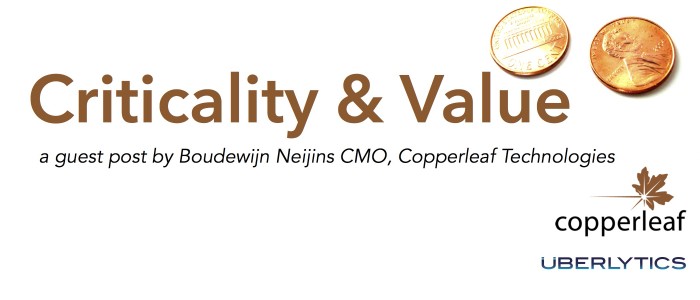The best possible asset management decisions come about by bringing together two key concepts: criticality and value.
A criticality analysis tells you where to focus your attention and as such, ensures your decisions will be effective, but the final decisions on which projects you will undertake are heavily influenced by financial, resource and timing constraints. Hence you need a method to value each candidate project, and a rational way to select the optimal mix and timing of projects. This means the projects that deliver the highest value must be selected for execution, while others must be deferred. This is where value-based decision making comes in.
Value-based decision making can help identify the best combination of investments that deliver the greatest “value” to the organization, while respecting funding, resource, and timing constraints. Sounds simple, and many people say they do it today, but the truth is, very few do it well.
So what does it truly take to make value-based decisions? It comes down to understanding how to determine “value” which requires four essential steps: Identify, Align, Assess and Optimize.
- Identify all the things that deliver value to your organization: These are called “value measures”. Some are unique to a specific department, while others can be general benefits across the entire organization. The important thing is that all benefits that contribute value to the organization are included.
- Align these measures to a normalized value scale: This is where it gets interesting. It’s essential to get agreement across the organization on the relative importance and contribution of each value measure. Without this, there’s no objective way to compare dissimilar investments. This typically requires in-depth discussions and agreement across the company to come to an agreed scale, but is a critical step in developing any value-based decision model.
- Assess every request to spend money using the agreed value measures: This means every request to spend money is assessed using a common “yardstick” to remove any subjectivity from the process. Every investment’s resulting value “score” is a true representation of how it contributes to the organization’s goals.
- Optimize to deliver the maximum value: In most cases, requests to spend money outweigh the available funding, labour, and/or materials. So that means some projects can be funded, while others get deferred. But which ones? Optimization is a mathematical process that determines the optimal set of projects that deliver the maximum value while respecting the funding, resource, and timing constraints, and honouring the organization’s tolerance for risk. Optimization must understand how value and risk change over time to make the proper decisions about which projects to defer.
Understanding criticality and value-based decision making will help you get started on the journey toward excellent value-based decision making. For a deeper dive on these topics, watch this webinar where Tacoma Zach and I discuss this in detail.
There are many important considerations when performing criticality analyses and setting up a value framework to support optimal decision-making. Learn more about these important subjects by downloading the Copperleaf white papers on value-based decision making, and by reading Tacoma Zach’s book Criticality Analysis Made Simple.
About Boudewijn Neijens, CMO Copperleaf Technologies
Boudewijn holds a Master’s Degree in Mechanical Engineering from the University of Brussels and an MBA from INSEAD in France. He has been involved with high-technology start-ups for the last 20 years, currently in the fields of asset management and environmental data processing. He is Vice-Chair of the Institute of Asset Management’s Canadian Chapter and President of the Plant Engineering and Maintenance Association of Canada’s BC Chapter. Boudewijn holds a Certificate in Asset Management from the IAM, and is a Certified Reliability Leader, a Certified Maintenance & Reliability Professional and a Certified Asset Management Assessor. Learn more about him here and connect with him on LinkedIn.



Comments are closed.